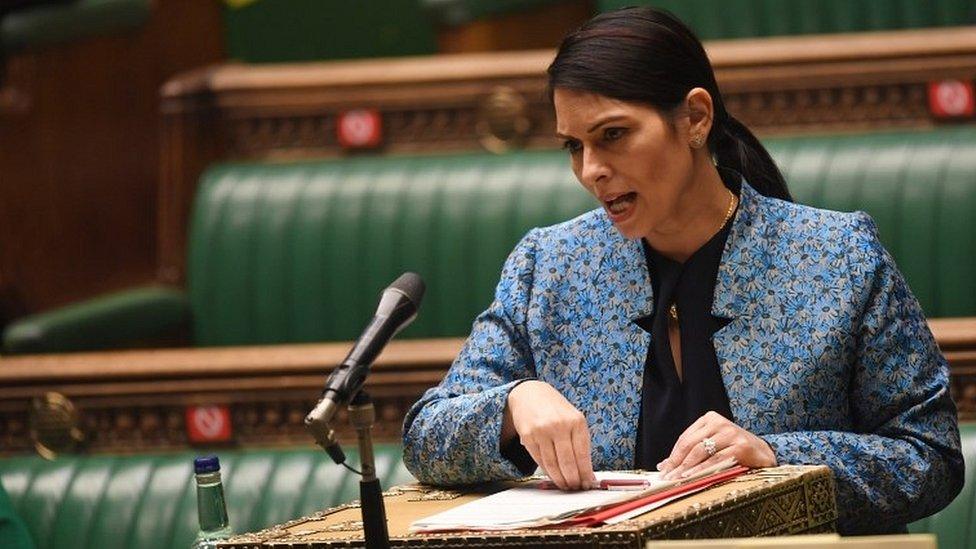Terror threat against MPs raised to substantial - Patel
- Published

The terror threat level currently facing MPs has been raised from "moderate" to "substantial" following a review, the government has announced.
Home Secretary Priti Patel told the Commons that police and intelligence services would "properly" reflect the change in their security arrangements.
But she added there was no information on "any credible or specific threat".
The announcement comes after Conservative MP Sir David Amess was killed in his constituency on Friday.
His stabbing, while meeting constituents at a church in Leigh-on-Sea, Essex, came five years after the murder of Labour MP Jo Cox.
A 25-year-old man was arrested on suspicion of murder after the attack on Sir David and police are treating the killing as a terrorist incident.
Following a security review by the Joint Terrorism Analysis Centre, Ms Patel told the Commons: "While we do not see any information or intelligence which points to any credible or specific or imminent threat, I must update the House that the threat level facing Members of Parliament is now deemed to be substantial."
She added: "I can assure the House that our world-class intelligence and security agencies and counter-terror police will now ensure that this change is properly reflected in the operational posture."
The terror threat for the UK as a whole is currently meaning an attack is "likely". At the "moderate" level, this is judged to be "possible but not likely".
The terror threat level is best understood as a shorthand that serves two purposes.
First, it gives the public an insight into what security chiefs think. So while not as remotely revealing as local crime statistics - it gives us a bit of a clue as to the national picture and, in theory, helps keep the public aware.
Secondly, it should help keep the UK's security and emergency agencies on their toes by making sure they have got the right plans and resources in place to minimise the likelihood or impact of an attack.
For 11 years, the level has been broken down publicly into three parts: The threat from international terrorism, the threat from Northern Ireland paramilitaries inside Northern Ireland - and the threat from those paramilitary groups to the rest of the UK.
My understanding is that until Wednesday there was not a formal assessment of the threat to Parliamentarians which had been kept secret.
The Joint Terrorism Analysis Centre - the body that analyses and assesses all available intelligence to come up with the rating would regularly discuss the safety of MPs in a similar way to how it would debate the threats to other potential targets in society.
That broad-brush assessment has now been formalised into an official rating of its own.
Addressing the Commons, Ms Patel also called social media a "cruel space", saying: "It has become far too permissive for too much cruelty and harm and it's not just levelled and leveraged towards elected Members of Parliament.
"We see children, different people of different races, religious groups being targeted and affected by some of the most awful, barbaric statements. That is what has to stop and change."
For Labour, shadow home secretary Nick Thomas-Symonds called on the the government to outline what would be done to protect the staff of MPs.
He added: "In order to stand firm in the face of these threats, we must do everything possible to guard against these violent positions, not least as we hear, as the home secretary has set out, that the threat level to MPs has been raised to substantial, and we accept the assessment made by the joint terrorism assessment centre that the threat has increased."